Discover the Authentic Flavors: 8 Traditional Portuguese Foods to Savor and enjoy
Although most people are familiar with the cuisine of neighboring Spain, Portuguese foods and cuisine has gone relatively unnoticed. Recently, Portugal, and in particular Lisbon, has become a feature on many traveler’s itineraries and trying the local and traditional Portuguese foods adds to the discovery and touring experience around the country. This has lead to more and more people asking, what should I eat when I go to Portugal? The following is just a sample of some of 8 traditional Portuguese foods to try when you visit Portugal.
Portugal is a country renowned for its rich culinary heritage and boasts a delightful array of traditional dishes that have stood the test of time. From hearty stews to mouthwatering seafood and delectable pastries, Portuguese cuisine offers a captivating fusion of flavors and influences. Whether you’re exploring the vibrant streets of Lisbon, wandering through charming coastal towns, or venturing into the picturesque countryside, immersing yourself in the world of traditional Portuguese dishes is an essential part of the culinary journey. Get ready to tantalize your taste buds and embark on a gastronomic adventure as we delve into the introduction of these cherished culinary treasures.
You should look out and try these tasty local and traditional Portuguese dishes when you see them in the menu or even as an easy and fast take out treat.
What is Portuguese food like?
What makes Portuguese food so delicious and comforting at the same time? Basically it’s all the basic and local foods that have been passed down the generations from each family and each regional specialty foods. But there are some typical Portuguese dishes below that stand out because of they were originally peasant food made with fresh and local ingredients. Basic ingredients like rice, bread, local spices, pastries, local meat and especially seafood and the popular cod that is typically dried to last a long timeframe before it is reconstituted into various casseroles, baked and fried dishes.
A typical Portuguese meal comprises of one main meat or seafood dish accompanied by several side dishes. Seafood is popular with a bacalau dish a seafood fish stew. Most dishes are well balance in a mediterrannean style with fresh ingredients, vegetables, spice, warm and satisfying including fruit and dessert to finish a meal in traditional Portuguese food culture.
Why try these traditional Portuguese dishes?
Many of these dishes are the popular classic dishes to try when you visit Portugal. With a strong food culture that started with simple peasant food made from the various regions, these dishes stand out as the national favorite that you will find all around the country from small mom and pop shops to nicer establishments. If you are craving something authentic and traditional to eat in Portugal, look for any of these specialty dishes and you won’t be disappointed with what you ordered.
Try these 8 delicious Portuguese foods and traditional cuisine
1. Pastel de nata
Portuguese food custard tart or pastel de nata, needs no introduction. Over the past few years, these delicious pastries have popped up in cafes and bakeries all over the world: from Berlin to Brisbane and are now a popular Portuguese street food.
The most original recipe comes from Pastéis de Belém, a pastelaria that dates back to 1837. But, even though Pastéis de Belém are the oldest pastelaria, you’ll find these cakes in every single café in Portugal.
Over the past few years, several new bakeries have launched in Lisbon. Some people say that these bakeries are even better than Pastéis de Belém, while others say you can’t beat the original. There’s no consensus, and the only way to get an answer is to try them all yourself.
Check out the best places to eat Pastel de Nata here from around Portugal for the best of the best.
As well as Pastéis de Belém, three places to include on your ‘grubcrawl’ are Manteigaria, Aloma, and Cristal. Let us know what your consensus is.
Check this favorite desert in Portugal
2. Bacalhau
Bacalhau is the national dish of Portugal, and you’ll find it on almost every restaurant menu across Portugal. The Portuguese love it so much, that it’s said that there are more than 365 different recipes for bacalhau: one for every day of the year. There are a variety of traditional Portuguese food recipes of this dish even though bacalhau is being used in a variety of new and exciting recipes with this ingredient.
Bacalhau is salt cod, although the dish itself is not necessarily salty. Prior to cooking, a chef will soak the bacalhau in cold water for at least 48 hours to remove the salt from the fish. If
Some of the most popular bacalhau recipes to look out for are ‘bacalhau com nata’, ‘bacalhau à bras’, and ‘bacalhau a lagareiro’.
Here’s bacalau done three different ways in Portugal, check out what these tasty appetizers are all about
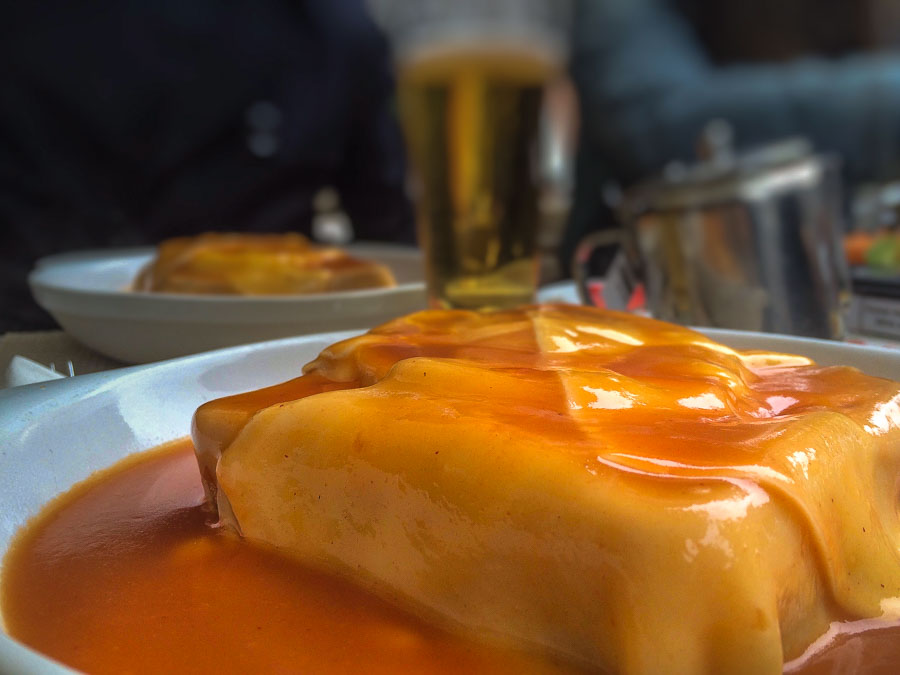
Portuguese food – unusual Francesinha
3. Francesinha
The Francesinha sandwich is one of Portugal’s most unusual dishes. As the story goes, a Portuguese man who had returned to Portugal after living in France invented it. He wanted to adapt the Croque Monsieur to Portuguese tastes, and so made a few adjustments to the recipe.
To say he went a little overboard is an understatement. Typically, a Francesinha contains ham, sausage, steak, and cheese. It is then covered in a beer and tomato sauce and served with chips.
The Francesinha is most commonly found in Porto although, if you look hard enough, you’ll find it in cafes all over Portugal.
This is a delicious Portuguese type sandwich below
4. Bifana
The Francesinha gets a lot of attention for being unusual, but Portugal’s best sandwich is probably the bifana. This is a pork sandwich, that’s usually eaten with mustard. A great deal of preparation goes into the pork seasoning, and recipes usually include garlic, white wine, vinegar, and spices. Ironically, even though chefs spend a lot of time on the bifana recipe, it’s traditional to add squeezy mustard to the bifana once served.
The best bifanas come from Porto, although the recipe originates from Vendas Novas in the Alentejo.
You’ll find bifana sandwiches available at many places around Portugal from mom and pop shops to cafes and specialty sandwich to go places for quick take away foods.
Delicious bifana or pork sandwich but who makes the best?
5. Cozido a Portuguesa
Cozido a Portuguesa is a traditional Portuguese stew. It’s made of vegetables (usually beans, carrots, turnips, potatoes, and cabbage) and meat. The meat used varies, and could include sausage, chicken, pork, ribs, pork ear, or pork trotters. What you get is a bit of a lottery, much like traditional stews from many other European countries.
This is one of Portugal’s most traditional dishes and, as such, you’ll find it all over Portugal from more rural areas to busy city centers that serve more traditional fare on their menus.
Check out this traditional preparation below
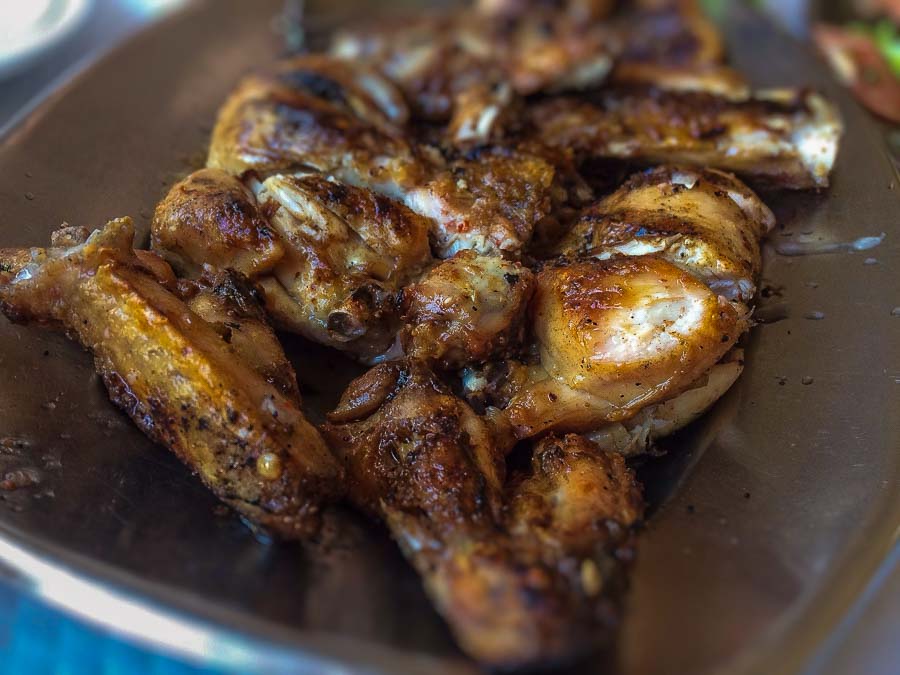
Portugal traditional food – ready to eat Frango assado
6. Frango Assado
Frango assado is what most of us call Piri-Piri chicken. Guia, a small town in the Algarve, claims it invented the dish using chillies that sailors brought back to Portugal from the new world. Frango Assado is one of the most popular Portuguese dishes that you will typically find on a menu or private event that is a local favorite dish being offered.
Grilled chicken and chips may seem simplistic, but it’s a dish that’s pretty much impossible to replicate to the same standards at home.
You’ll find frango assado on menus throughout Portugal, but the best Piri-Piri chicken is definitely found in the Algarve where it is a staple main dish in many manus around the region.
Frango assado is popular and always on the menu here
7. Leitão à Bairrada
Leitão is suckling pig; a young and tender pig that’s roasted in a wood oven. While cooking, the meat is continually basted with a sauce that comprises of garlic, bay leaves, salt, and pig fat to keep the meat from drying out. This is a very special dish; so much so that traditionally it was something enjoyed by royalty. These days, it is often served for big events such as weddings.
While restaurants all over Portugal serve leitão , the best tends to come from the Bairrada region of Portugal. You will find this is a specialty dish that locals and tourists alike will enjoy eating and savoring a long delicious meal.
A favorite Portugues dish is roasted Pig
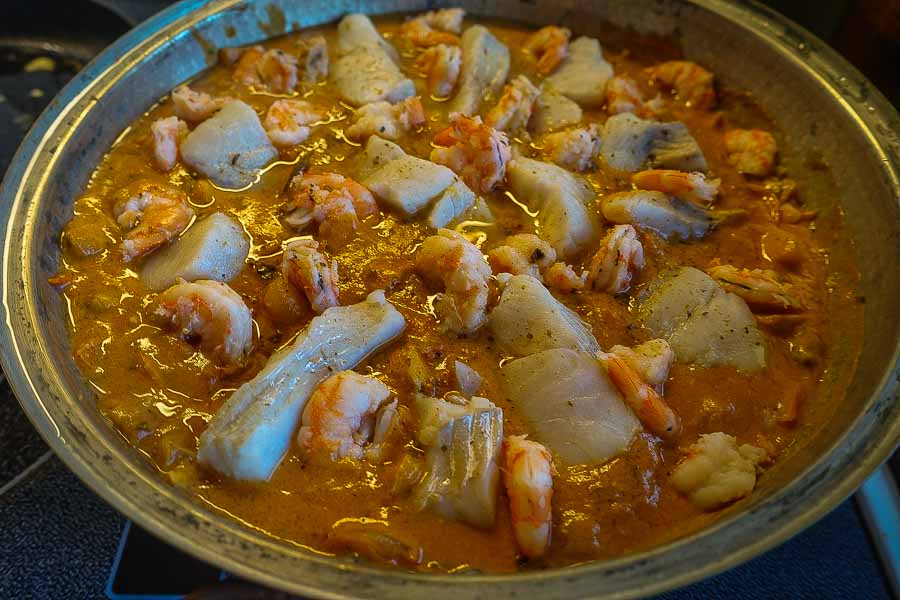
Portugal food – delicious Cataplana
8. Cataplana
A cataplana is the name of a bronze cooking dish that’s shaped a little like a clam and used to create Portuguese stews. The most common cataplana dish is probably a seafood cataplana. This dish contains white fish and seafood as well as a sauce that’s made up of chopped tomatoes, parsley, garlic, white wine, and paprika. Other popular cataplana dishes to look out for are cataplana de polvo or cataplana Alentejana.
Cataplana dishes are most common in the Algarve, although it’s possible to find them on menus all over Portugal. Many coastal regions and even in Lisbon will have their own versions of Cataplana dishes available on their menu featuring what seafood is local and available to use.
An interesting cooking pot and style of seafood stew below
Where to find these traditional Portuguese dishes when you visit.
When visiting Portugal, you can find traditional Portuguese dishes in various establishments throughout the country. Here are some places to look for and indulge in these culinary delights:
Local Restaurants: Seek out authentic Portuguese restaurants, particularly those that specialize in traditional cuisine. These establishments often showcase regional dishes and recipes passed down through generations, allowing you to savor the true essence of Portuguese gastronomy.
Tascas and Petiscarias: These small, casual eateries are popular among locals and offer a wide range of traditional Portuguese dishes. Tascas typically serve hearty meals, while petiscarias specialize in petiscos, which are small plates or Portuguese tapas, perfect for sharing and exploring a variety of flavors.
Mercados (Markets): Many cities and towns in Portugal have bustling food markets where you can find fresh produce, local ingredients, and vendors serving traditional dishes. Mercado da Ribeira in Lisbon and Mercado do Bolhão in Porto are famous examples where you can sample a diverse selection of Portuguese cuisine.
Pastelarias (Pastry Shops): These charming pastry shops are a must-visit to indulge in Portuguese sweets and pastries. From the iconic Pastéis de Nata (custard tarts) to the heavenly Pastel de Tentúgal or regional specialties like Queijadas de Sintra, pastelarias offer a delightful assortment of traditional treats.
Coastal Regions: Portugal’s extensive coastline is a treasure trove of fresh seafood. Visit coastal regions such as Porto, Aveiro, or Algarve, where you can relish mouthwatering seafood dishes like Bacalhau à Brás (salted cod), Caldeirada (fish stew), or grilled sardines prepared with traditional Portuguese flavors.
Fado Houses: Fado, Portugal’s soulful music genre, is often accompanied by traditional Portuguese cuisine in Fado houses. These intimate venues allow you to enjoy live performances while savoring authentic Portuguese dishes, creating a truly immersive cultural experience.
Festivals and Local Events: Keep an eye out for food festivals and local events happening during your visit. These celebrations often feature traditional food stalls and vendors serving regional specialties, allowing you to taste a wide variety of Portuguese dishes in one place.
Family-Run Establishments: Don’t underestimate the charm of small family-run establishments, such as taverns or countryside restaurants. These hidden gems often serve traditional Portuguese dishes prepared with love and care, offering an authentic and intimate dining experience.
Exploring these culinary venues and seeking out traditional Portuguese dishes will undoubtedly enhance your visit to Portugal, allowing you to savor the country’s rich gastronomic heritage and create lasting food memories.
More inside tips to trying traditional Portuguese dishes
Exploring traditional Portuguese dishes is a delightful culinary adventure. Portugal’s cuisine is known for its flavors, freshness, and diverse regional specialties. You should look to try the local delicacies, explore the public markets and sample delicious wines grown in the area.
Here are some inside tips for trying traditional Portuguese dishes:
Portuguese Wine: While not a dish, Portuguese wines are exceptional and pair wonderfully with the cuisine. Don’t miss trying Vinho Verde, Port wine, and the rich reds from the Douro Valley.
Local Markets: Visit local markets, such as Mercado da Ribeira in Lisbon or Mercado Bolhão in Porto, to sample traditional dishes and fresh produce in a lively atmosphere.
Tascas: Explore traditional Portuguese taverns or tascas for an authentic and budget-friendly dining experience. Locals often gather in these cozy spots.
Bread and Olives: Most restaurants will serve bread and olives before the meal. Enjoy these complimentary appetizers while waiting for your order. If you don’t want them, feel free to let the waiter know.
Menu of the Day: Some restaurants offer a “Menu do Dia” (Menu of the Day), which includes a fixed-price meal with several courses. This is an excellent opportunity to try a traditional Portuguese meal at a reasonable cost.
Pace Yourself: Portuguese meals can be hearty and filling. Take your time to enjoy each course and allow your taste buds to savor the flavors.
Ask for Local Favorites: When in doubt, don’t hesitate to ask the waiter for their recommendations. Locals often know the best dishes a restaurant has to offer.
Cultural Etiquette: Embrace the local dining customs and etiquette. In Portugal, it’s customary to say “Bom Proveito” (enjoy your meal) before you start eating.
Hidden Gems: Venture off the main tourist areas to discover hidden gem restaurants and local eateries. These places often offer more authentic and affordable dining experiences.
Language Tips: Learning a few basic Portuguese phrases can go a long w
Desserts: In addition to pastéis de nata, try other Portuguese desserts like Bolo de Bolacha (cookie cake), Arroz Doce (rice pudding), and Toucinho do Céu (almond tart).
Share and Explore: Portuguese cuisine is best enjoyed with friends and family. Consider sharing different dishes to get a taste of a variety of flavors and textures. It’s a great way to explore the diverse culinary landscape of Portugal.
Venture beyond the familiar Portuguese dishes to discover the lesser-known culinary treasures that each region of Portugal has to offer. It’s a delicious way to explore the country’s rich and diverse gastronomic heritage.
If you enjoyed the post, please pin it
Check out these other posts on visiting Portugal
Visiting the Unesco towns in Evora, Portugal
Five best views of Medeira, Portugal
A visit to Albufeira in the Algarve
Guest writer bio
James writes for Portugalist, a travel blog about Portugal and all things Portuguese. He has spent time living all over Portugal: in Lisbon, the Algarve, and Northern Portugal. He is currently based in the Algarve, where he is writing about everything the region has to offer. Check out his blog at portugalist.com
Conclusion on eating traditional Portuguese foods
Indulging in traditional Portuguese foods is an essential part of experiencing the country’s vibrant culture and culinary heritage. From savory seafood dishes to hearty stews, delightful pastries, and regional specialties, Portugal offers a gastronomic journey that delights the senses and satisfies the palate. Whether you explore local restaurants, visit bustling food markets, or immerse yourself in the charm of pastelarias, each bite brings you closer to the heart of Portuguese traditions and flavors.
As you savor these authentic dishes, you’ll discover the unique blend of influences from Portugal’s rich history of exploration and cultural exchange. From the Mediterranean flavors of olive oil and fresh herbs to the influence of the sea in its bountiful seafood offerings, traditional Portuguese cuisine reflects the country’s diverse landscapes and culinary creativity.
Thanks for visiting today and checking out this post on 8 traditional Portuguese foods to try in Portugal, if you enjoyed the images and post, could you please share it with any of the social media buttons located around the post.
If you like what you see, come and check out my other social media channels for more updates, including Instagram, Pinterest and Twitter

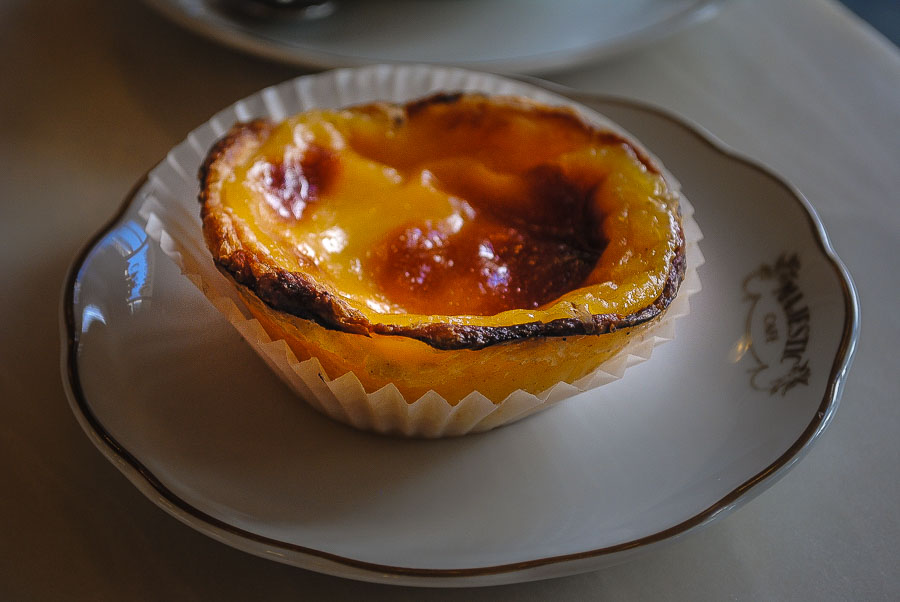

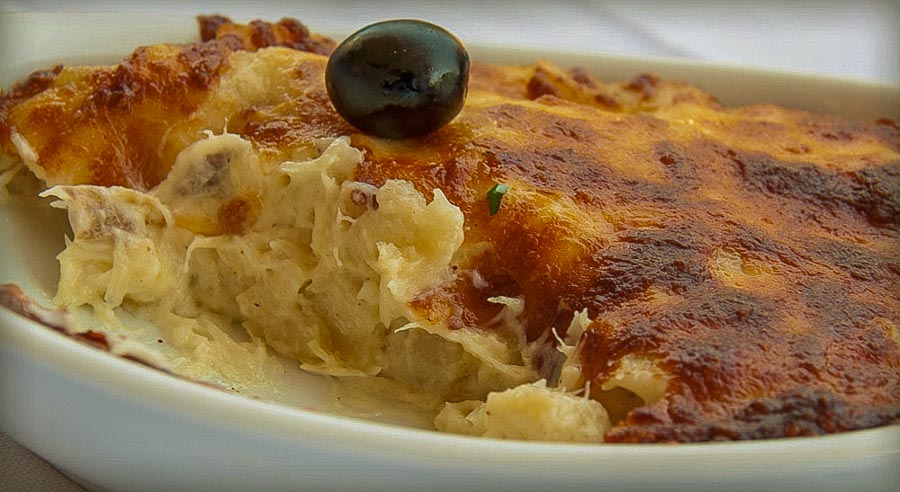
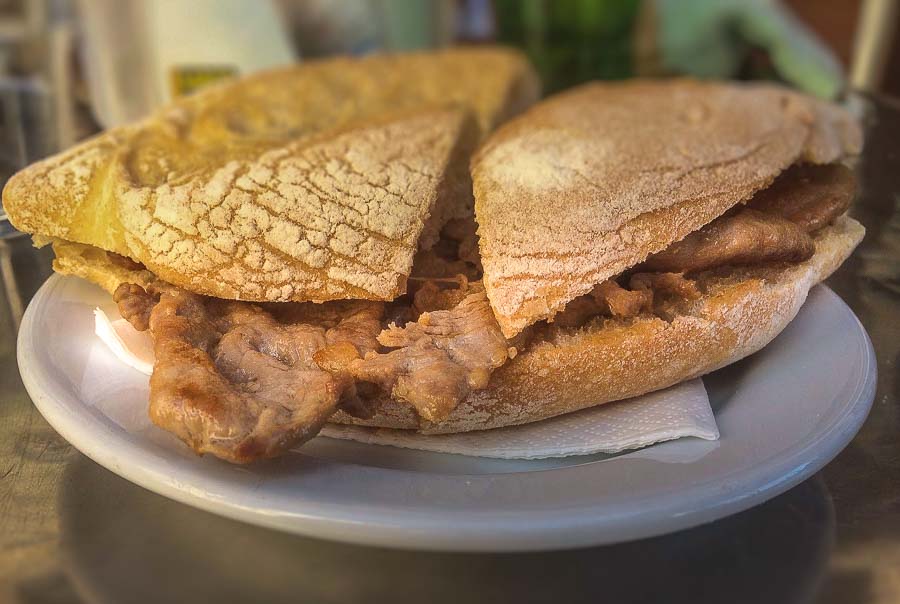
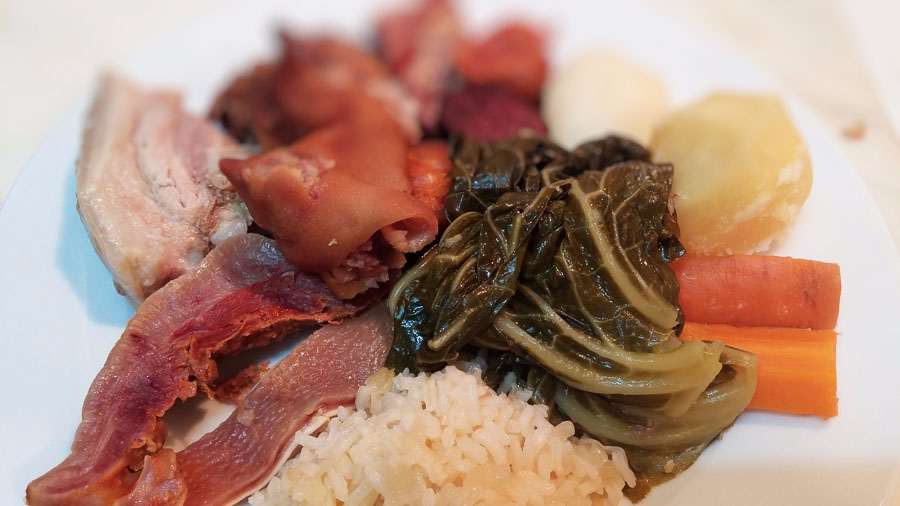
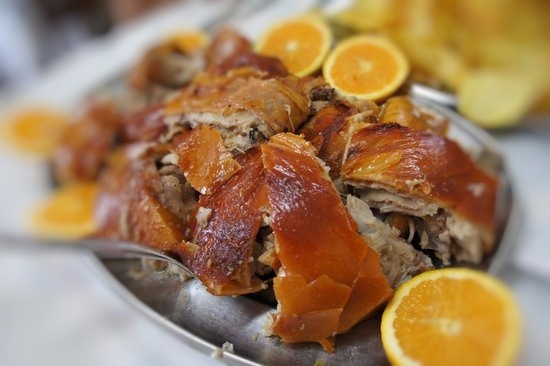



I adore all Portuguese dishes but the bread . . . oh my, the bread. I have visited several countries and enjoyed cuisine on both sides of the globe but nothing anywhere compares to fresh papo secos. Yum!
Traditional Portuguese foods are delicious and worth looking for whenever you get the chance including the breads.
Well I’ve just read the posts by two fellow bloggers who had me drooling for chocolate – now my stomach is growling for Portuguese food! Beautiful shots and great information. I have to admit my heart belongs to Portuguese malasadas!
Oh yes, I love Portuguese malasadas also, surprised it didn’t make this list, it would be quite appropriate. In Hawaii we also took in the malasadas from Portuguese plantation workers that made those delicious donuts.
Awesome photos, and you’ve made me want to return to Portugal right away. Nata tarts – oh how I gorged on them! Thanks for introducing me to a whole lot of new foods and taste sensations waiting to be explored too!
Those do look good don’t they, visiting Portugal and trying all these Portuguese dishes really makes a trip like this a spectacular experience
I did not spend very much time in Portugal so I don’t recognise these dishes. They do sound great. One meal I do fondly remember was a dinner I had in the town center of Evora. It was some sort of stew served in the half scalloped side of roof tile. Any ideas of what it might have been? It seemed very authentic at the time.
That dish sounds delish, hopefully the guest blogger can answer what that traditional Portuguese dish is.
There are so many reasons to fall in love with Portugal but the food is high on our list! My favorite dishes are the Cataplana and Octopus salad while Richard orders chicken Piri-Piri whenever he sees it on the menu and we’ve eaten more Pastel de nata’s than we can count. I don’t know that you can go wrong with any fish dishes and the pastries are amazing. It’s a good thing that people around here walk so much because you need to work off all the amazing food! Anita
Portuguese food looks so varied and flavorful, its been almost 20 years for me since I visited Portugal and need to visit soon and try some of this amazing Portuguese dishes.
I’m hungry after reading this. I obviously haven’t had much opportunity to try Portuguese food as I was unfamiliar with all of these. I would like to visit Portugal and, if I do, I will look for all of these to try.
I know all these Portuguese dishes sound so delicious don’t they – makes me want to go visit Portugal soon!
OMG, most or our dishes are absolutely delicious, I been living in the states for almost 30 years, and I am married to an American / Italian man, who loves pretty much everything I cook, and mostly, I still like to cook traditional Portuguese dishes, yummy, you can’t go wrong
Glad you know how to make delicious traditional Portuguese foods for the hubby